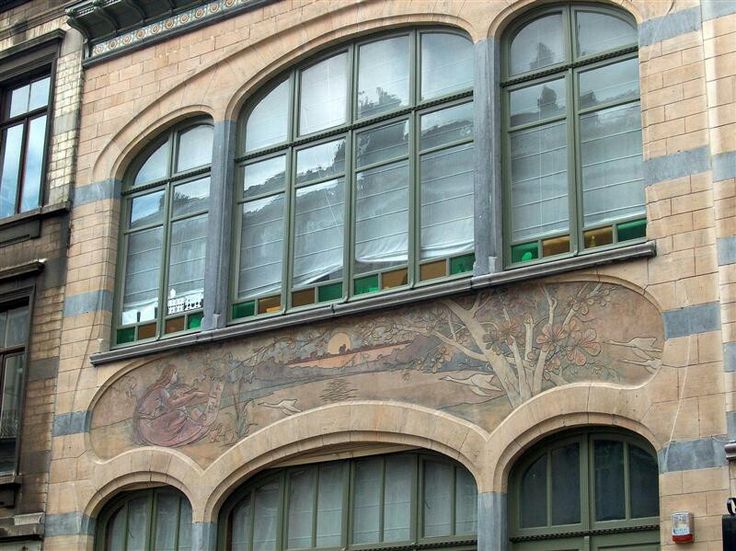#4887. Art Nouveau Facade with Floral Bas-Relief and Semi-Circular Windows
The image showcases an excellent example of Art Nouveau architecture. The building's facade is made of light sandstone with decorative elements characteristic of this style. Particular attention is drawn to the large semi-circular window on the upper floor, divided by metal frames into multiple sections. The window frame is painted in a dark gray color, creating a striking contrast with the sandy shade of the wall.
Below the large window, there is a unique bas-relief depicting nature motifs - trees and stylized plant elements, which is a distinctive feature of the Art Nouveau style. The relief is organically integrated into the architectural composition and creates a smooth transition to the arched windows of the lower floor. An interesting detail is the horizontal stripes of darker stone that rhythmically cross the facade, adding visual structure to the building.
In the lower part of the facade, one can notice several more windows with arched tops, executed in the same style. The entire composition demonstrates an organic combination of functionality and decorativeness, characteristic of architecture from the late 19th to early 20th century. This facade fragment is an excellent example of how Art Nouveau architects sought to integrate art into the everyday urban environment.
